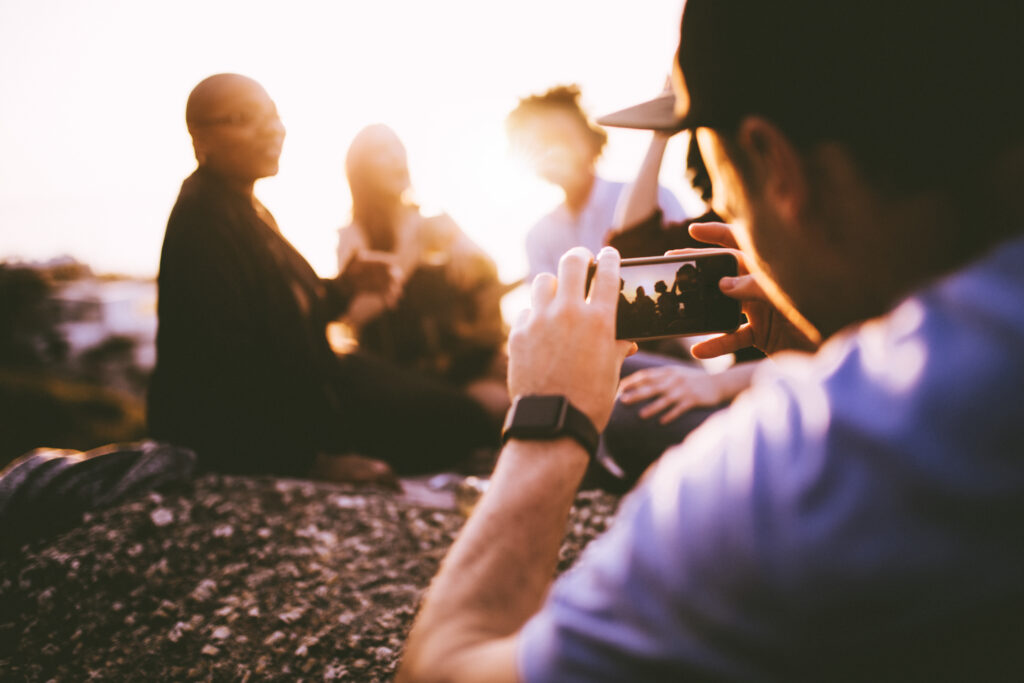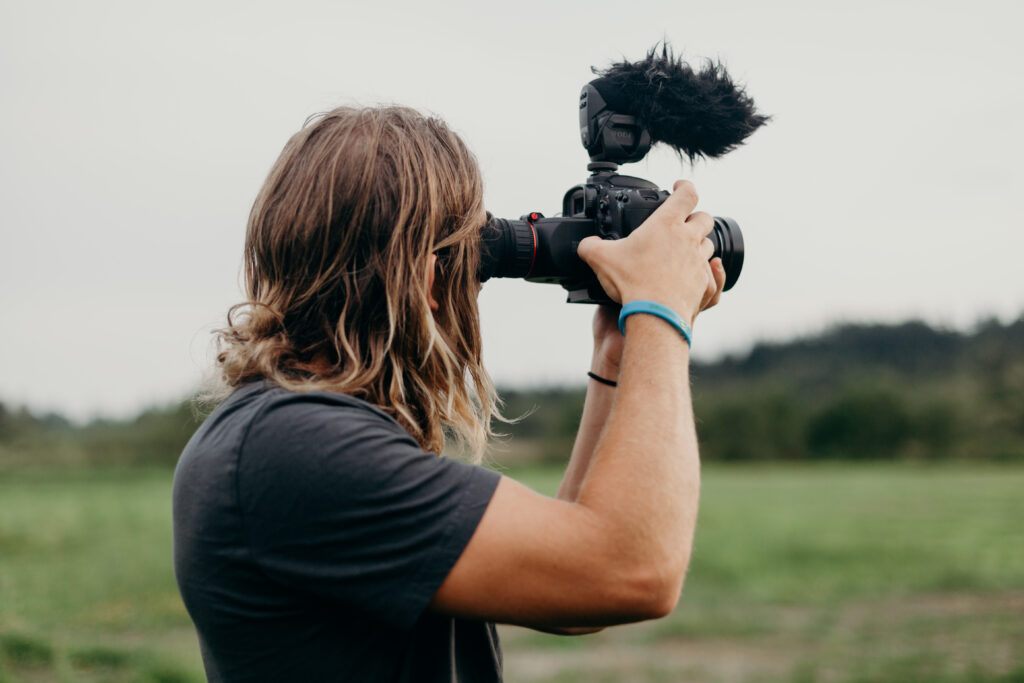B2B marketers experience a remarkable 49% faster revenue growth by incorporating video into their strategies. Video has proven to be the most powerful tool for both B2C and B2B marketing, becoming the new standard across various channels.
However, it’s essential to recognize that merely placing product videos on your website and social media platforms doesn’t guarantee their effectiveness.
Video in B2B marketing strategy

The utilization of video in B2B marketing offers compelling advantages. In a mere 15-second video, a potential customer can absorb significantly more information compared to reading text for the same duration. However, the benefits of video marketing extend beyond mere information retention.
Developing a B2B video marketing strategy involves several crucial steps. First and foremost, establish clear marketing goals that align with your overall business objectives. Define key performance indicators (KPIs) that will gauge the success of your strategy if it achieves its intended outcomes.
Utilizing video effectively
- Enhancing Internal Communication Effective internal communication is crucial for achieving success, especially when multiple teams are involved in a marketing strategy.
- Utilizing video to communicate goals and outline the strategy ensures everyone is aligned and actively contributes their ideas during the planning process.
- Developing a Cohesive Brand & Voice Refining your brand with a consistent tone establishes trust and reliability.
- A clearly defined brand makes it easier for potential customers to remember your business and envision the unique and innovative ways it addresses challenges.
Maintaining Brand Consistency Carry your brand’s essence and tone of voice into your video content. Infuse the same energy and perspective, while using consistent graphics, fonts, and colors as your other marketing materials.
Follow this steps
- Understanding Your Target Market & Audience A critical aspect of devising a successful B2B marketing strategy involves comprehending your company’s market position and its relation to competitors.
- Analyze your sales data to identify the types of businesses that engage in your customer journey and make purchases. Determine which companies become repeat customers or long-term subscribers.
- Narrow down the businesses you wish to target, considering factors like:
- Business Size (small, medium, enterprise)
- Industry (Healthcare, Education, etc.)
- Number of Employees
- Revenue
- Location (by region or specific country)
Additionally, focus on the individuals within these businesses that you are targeting. Identify relevant departments like marketing, human resources, executives, or product development. Create specific personas for these individuals, taking into account their:
Customer Engagement
Through Video Customer profiles play a vital role in any business strategy, but personalizing content for a group can be challenging.
Encourage customers to share video testimonials or participate in video interviews by offering exclusive discounts or benefits in return. When creating content, consider how individuals within your audience segments would personally benefit from it.
- Competitive Analysis Conduct a thorough assessment of your company’s position relative to your competitors to understand your market standing and positioning.
- Start by researching direct competitors—businesses that are similar in size and target the same industry. Compile a list of these competitors, including both smaller and larger companies.
- Understanding Your Market Position
- Identifying your business’s position in the market enables you to develop a winning strategy that sets your company apart from the competition.
- Assess if competitors in your industry underutilize videos or produce lackluster content.
- Explore how you can leverage video to surpass the competition by enhancing each step of the customer journey, making it more engaging and enjoyable.
- Crafting a Market-Specific Strategy Treat your strategy as the core thesis of your organization. Determine the desired outcomes your business aims to achieve and the approach that renders your competition irrelevant.
- Define Brand Vision Develop a clear vision of your business objectives by answering two crucial questions for your B2B marketing strategy:
Examine how your company excels in solving customer pain points or driving innovation to create new demand within the market.
Identify Unique Value Proposition
Identify Unique Value Proposition Reflect on your company’s mission statement and the transformation your product or service brings to customers.
Considering your close competitors, analyze if your business fills a market gap or innovates the existing standards, constituting your unique value proposition.
While many companies may address the same problem, their unique value propositions differ significantly in the audiences they serve and the core features they emphasize.
COMPOSING YOUR STRATEGY

Craft a vivid portrayal of your envisioned success. Let the overall business mission and the insights gathered thus far guide your marketing strategy.
Your strategy should include:
- Your overarching vision for the business.
- Address any issues that the strategy needs to overcome.
- The anticipated outcome of a successful strategy.
Be concise, whether it’s a sentence or a few paragraphs. Your marketing strategy should project success and outline the key elements needed to make it a reality.
Merge your brand vision, innovative market approach, and desired outcomes into a cohesive and compelling strategy.
BUILDING A MARKET-SPECIFIC STRATEGY
Your strategy serves as the core thesis of your organization, outlining the desired outcomes and rendering your competition irrelevant.
- DEFINE BRAND VISION Craft a clear vision of your business objectives by addressing these crucial questions for your B2B marketing strategy:
- Why have we chosen this market over others?
- How do we plan to become the best in this market?
Examine how your company excels in solving customer pain points or driving innovation to create new demand within the market.
Observe the diverse unique value propositions of companies solving the same problem. You will notice significant differences in the audiences they serve and the core features they emphasize.
UTILIZING VIDEO EFFECTIVELY
Your brand strategy should serve as an inspiring force, motivating both you and your employees to bring your company mission to life. Utilize video to express gratitude to your employees and foster excitement and motivation for upcoming events, projects, and strategic shifts.
- Mapping Channels & Technology with your strategy and gathered information in hand, it’s time to assess for any gaps. Begin by listing your marketing channels, which may include:
- Website or landing pages
- Newsletter
- Blog
- Social media
- Paid advertising
- Webinars
- Demos or Trials
- Opt-in Offers (White Papers, Case Studies, etc.)
- Knowledge Base
Take a closer look at each channel and its effectiveness in reaching your target audience. For instance, while you initially considered social media covered, market and competitor analysis revealed that your audience is more active on TikTok than Facebook.
Similarly, if you’ve been investing in advertising without developing a marketing funnel to attract organic leads and nurture potential customers, it may be time to reassess your approach.
Choose your marketing channels for video marketing

As you outline your marketing channels, take note of the current video usage in promoting your products and services. Evaluate the presence of videos on your website, social media pages, paid advertising, onboarding process, and other touchpoints. Utilize analytics to identify potential areas where video could enhance engagement and boost conversions. Begin outlining how video can elevate your customer experience.
- Mapping Your Customer’s Journey In B2C businesses, the customer journey typically involves creating product awareness, potential customers considering the offering, the company nurturing their desire or relationship, and finally, a purchase. While post-purchase customer support is essential, the funnel is relatively straightforward.
The B2B customer journey, however, differs significantly. Research and comparison phases hold paramount importance due to higher prices or more intricate offerings.
PLANNING YOUR VIDEO-LED CUSTOMER EXPERIENCE
Based on the information gathered, strategize how you will engage potential customers at each stage of your sales funnel. Consider the following examples of content you can create for each stage:
- Awareness: Utilize blog posts, educational videos, and social media content.
- Research & Competition: Offer white papers, case studies, and comparison guides.
- Conversion: Provide demos, trials, and testimonials to encourage conversions.
- Post-Sales Service: Offer exclusive video content, email newsletters, and success stories to support customers after purchase.
- Loyalty & Retention: Encourage feedback through surveys, create community groups, and implement loyalty programs.
At every stage, leverage video content to enhance the user experience. Keep in mind that producing videos requires time and effort, whether you handle it in-house, collaborate with freelancers, or engage a production company. Create a content production list and prioritize implementation as outlined below.
SETTING VIDEO PRODUCTION & MARKETING BUDGET
Revisit the goals defined in step one and estimate the associated costs for each goal. Project the anticipated return on investment (ROI) by leveraging past campaign data to estimate the cost per new lead or conversion.
For instance, if your goal is to achieve 100 conversions, and historical data shows that each conversion costs $200 to acquire, you can estimate a marketing budget of $20,000 to reach the goal.
TAKING ACTION & SCHEDULING IMPLEMENTATION

Now it’s time to put your B2B video marketing strategy into action! Create a formal plan outlining the implementation process, utilize work management tools to stay organized, and collaborate effectively with your internal team members.
If time and budget constraints exist, consider implementing your B2B video marketing plan in stages, prioritizing the highest-impact content.
Engage with your customers, gather their feedback, and concentrate on crafting a seamless customer experience that consistently leads to conversions. Continuous improvement and customer-centricity will be key to your success.








